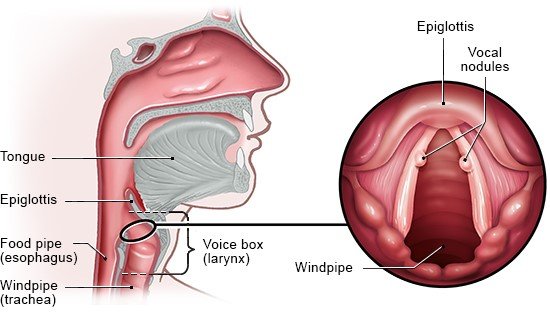Introduction

Vocal nodules can develop if you use your voice too much over a long period of time. They make your voice hoarse and change the sound of your voice. These small, benign (non-cancerous) growths usually go away again if you rest your voice or do voice therapy. Surgery is only very rarely needed.
The vocal cords are two folds of membrane tissue roughly in the middle of the larynx. Also known as the voice box, this is the part of the throat where air enters the windpipe. The outer edges of the vocal cords are attached to muscle tissue that helps to change their position: When you speak or sing, your vocal cords move closer together. As air passes through them, they vibrate and make sounds. If the vocal cords are overused, the membrane tissue becomes swollen and small nodules may develop.
Problems with your voice can also be caused by other things. The most common cause is an inflammation of the larynx (laryngitis). Smoking and vocal cord paralysis can also lead to problems with your voice. In rare cases, they are caused by a malignant tumor (cancer) or psychological problems.


